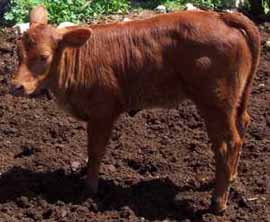|
Ashes of the Red
Heifer
|
The Mystery of the Red Heifer SacrificeGrant R. JeffreyIn Numbers 19, Moses wrote these inspired instructions regarding the mysterious sacrifice of the Red Heifer: "Then the heifer shall be burned in his sight: its hide, its flesh, its blood, and the offal shall be burned. And the priest shall take cedar wood and hyssop and scarlet, and cast them into the midst of the fire burning the heifer. Then the priest shall wash his clothes, he shall bathe in water, and afterward he shall come into the camp; the priest shall be unclean until evening. And the one who burns it shall wash his clothes in water, bathe in water, and shall be unclean until evening. Then a man who is clean shall gather up the ashes of the heifer, and store them outside the camp in a clean place; and they shall be kept for the congregation of the children of Israel for the water of purification; it is purifying from sin. And the one who gathers the ashes of the heifer shall wash his cloths, and be unclean until evening. It shall be a statute forever to the children of Israel and to the stranger who sojourns among them. He who touches the dead body of anyone shall be unclean seven days. He shall purify himself with the water on the third day and on the seventh day; then he will be clean. But if he does not purify himself on the third day and on the seventh day, he will not be clean. Whoever touches the body of anyone who has died, and does not purify himself, defiles the tabernacle of the Lord. That person shall be cut off from Israel. He shall be unclean, because the water of purification was not sprinkled on him; his uncleanness is still on him" (Numbers 19:5-13) The primary spiritual significance of the Sacrifice of the Red Heifer is the fact that it symbolically points to the ultimate sacrifice of Jesus Christ as our only hope of being cleansed from the uncleanliness of our sins. The Talmud claims that the Red Heifer sacrifice was the only one of God's commands that King Solomon, the wisest man who ever lived, claimed he did not understand. Although the priest obediently offered the sacrifice as demanded by God, Solomon apparently did not understand why Numbers 19 declared that the priest would be "unclean until evening." This unusual sacrifice symbolically pointed to Jesus Christ and His sacrifice because our Lord, who was perfectly sinless, judicially took upon Himself the sins of the world so that we who are sinful could become righteous before God. Christ paid the price for our sins. Just as the Red Heifer was sacrificed "outside the camp" in contrast to all other sacrifices that took place in the Tabernacle or Temple, Jesus was sacrificed outside the city of Jerusalem. In contrast to the normal male animals sacrificed, the Red Heifer was the only female animal the Law commanded to be sacrificed. Significantly, our Lord was betrayed for thirty pieces of silver, the price of a female slave. In addition to the obvious spiritual significance of the law of the Sacrifice of the Red Heifer we now understand that the water of purification described in Number 19 actually had the ability to destroy germs and infection. The resulting water of purification solution contained ashes from the Red Heifer sacrifice combined with cedar, hyssop and scarlet thread. This water of purification contained "cedar" oil that came from a kind of juniper tree that grew in both Israel and in the Sinai. This cedar oil would irritate the skin, encouraging the person to vigorously rub the solution into their hands. Most importantly, the hyssop tree-associated with mint, possibly marjoram-would produce hyssop oil. This hyssop oil is actually a very effective antiseptic and antibacterial agent. Hyssop oil contains 50 percent carvacrol which is an antifungal and antibacterial agent still used in medicine, according to the book None Of These Diseases. When we note that the waters of purification from the Red Heifer Sacrifice were to be used to cleanse someone who had become defiled and unclean due to touching a dead body, we begin to understand that this law was an incredibly effective medical law as well as a spiritual law. The Book of Hebrews reveals that Paul, an educated rabbi, understood that the Red Heifer sacrifice had a practical medical effect as well as its more obvious spiritual element. Paul declared that "the blood of bulls and goats and the ashes of a heifer, sprinkling the unclean, sanctifies for the purifying of the flesh" (Hebrews 9:13). The Jews stood apart from the pagan nations in attention to sanitation and personal cleanliness as a result of the commands of God revealed in the Old Testament. Reference: Jeffrey, Grant R., "The Signature of God", Frontier Research Publications, Inc. (1996), p.152-153
|
